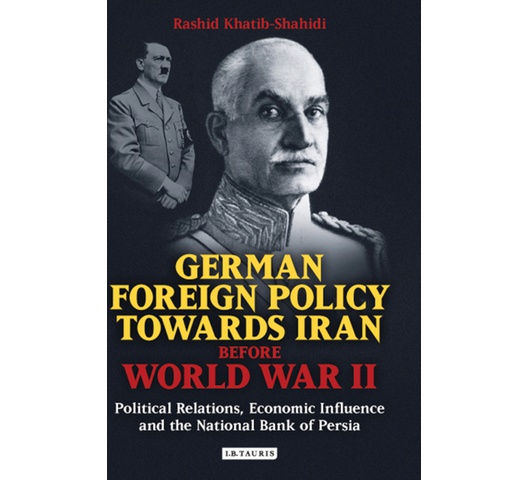
German Foreign Policy Towards Iran Before World War II
This is an eBook that you can download electronically.
Early twentieth-century Iran had been dominated by the competing influences of the two great imperial powers of the time - Russia and Britain - making it difficult for a third power to establish a foothold. But an emergent, highly industrialised and assertive Germany in the 1930s became an attractive ally through which Iran could cut loose from domination by Britain and the Soviet Union, allowing it to seek modernity outside the constraints of old imperial interests. This led to the development of close commercial ties between Reza Shah's Persia and Hitler's Germany in the interwar period, an aspect of German foreign policy that is often overlooked. It was the National Bank of Persia, established in 1927 under German management, and with Kurt Lindenblatt as its governor, that was to be the vehicle for Germany's commercial expansion into Iran. The Bank was a vital engine driving industrialisation, even after Lindenblatt retired and was followed by Gholam Reza Amir-Khosrari and a board of directors including Hossein Ala and Abdul Hossein Hazhir.
By the mid-1930s, a new German foreign policy approach of active diplomacy fortified initial inroads into the Iranian economy, building upon the foundations laid by individual entrepreneurs, the National Bank and the construction of the Trans-Iranian Railway. Iran evolved into an attractive country for international trade and, at the outbreak of World War II, Germany was Iran's largest trading partner - surpassing both the Soviet Union and Britain. These close ties reveal a complex relationship between Germany and Iran, and an admiration of the Nazi's brand of industrial, scientific and organisational progress. It was, however, a relationship that came to an abrupt end with the Allied invasion of Iran in 1941 that deposed the Shah. Khatib-Shahidi delves into previously untapped German primary sources to explore the nature of German involvement in Iran between the wars, examining how it came to be moulded by a handful of individuals. This book is a revealing resource on the historical ties between Iran and Germany, making it indispensable for students and researchers of European Imperialism and Colonialism in the Middle East as well as of Iranian Political and Economic History.
SKU: 9781786724687
Format: EPUB
By the mid-1930s, a new German foreign policy approach of active diplomacy fortified initial inroads into the Iranian economy, building upon the foundations laid by individual entrepreneurs, the National Bank and the construction of the Trans-Iranian Railway. Iran evolved into an attractive country for international trade and, at the outbreak of World War II, Germany was Iran's largest trading partner - surpassing both the Soviet Union and Britain. These close ties reveal a complex relationship between Germany and Iran, and an admiration of the Nazi's brand of industrial, scientific and organisational progress. It was, however, a relationship that came to an abrupt end with the Allied invasion of Iran in 1941 that deposed the Shah. Khatib-Shahidi delves into previously untapped German primary sources to explore the nature of German involvement in Iran between the wars, examining how it came to be moulded by a handful of individuals. This book is a revealing resource on the historical ties between Iran and Germany, making it indispensable for students and researchers of European Imperialism and Colonialism in the Middle East as well as of Iranian Political and Economic History.
KES 10,859

International delivery
Free click & collect
When you buy an ebook from TBC, you will be given a code to download your
purchase from our ebook partner Snapplify. After you have redeemed the code and
associated it with a Snapplify account, you'll need to download the Snapplify Reader
to read your ebooks. The free Snapplify Reader app works across iOS, Android,
Chrome OS, Windows and macOS; on tablets and mobile devices, as well as on
desktop PCs and Apple Macs.
You're currently browsing Text Book Centre's digital books site. To browse our range of physical books as well as a wide selection of stationery, art supplies, electronics and more, visit our main site at textbookcentre.com!
Reviews
This product does not have any reviews yet.
Add your review
